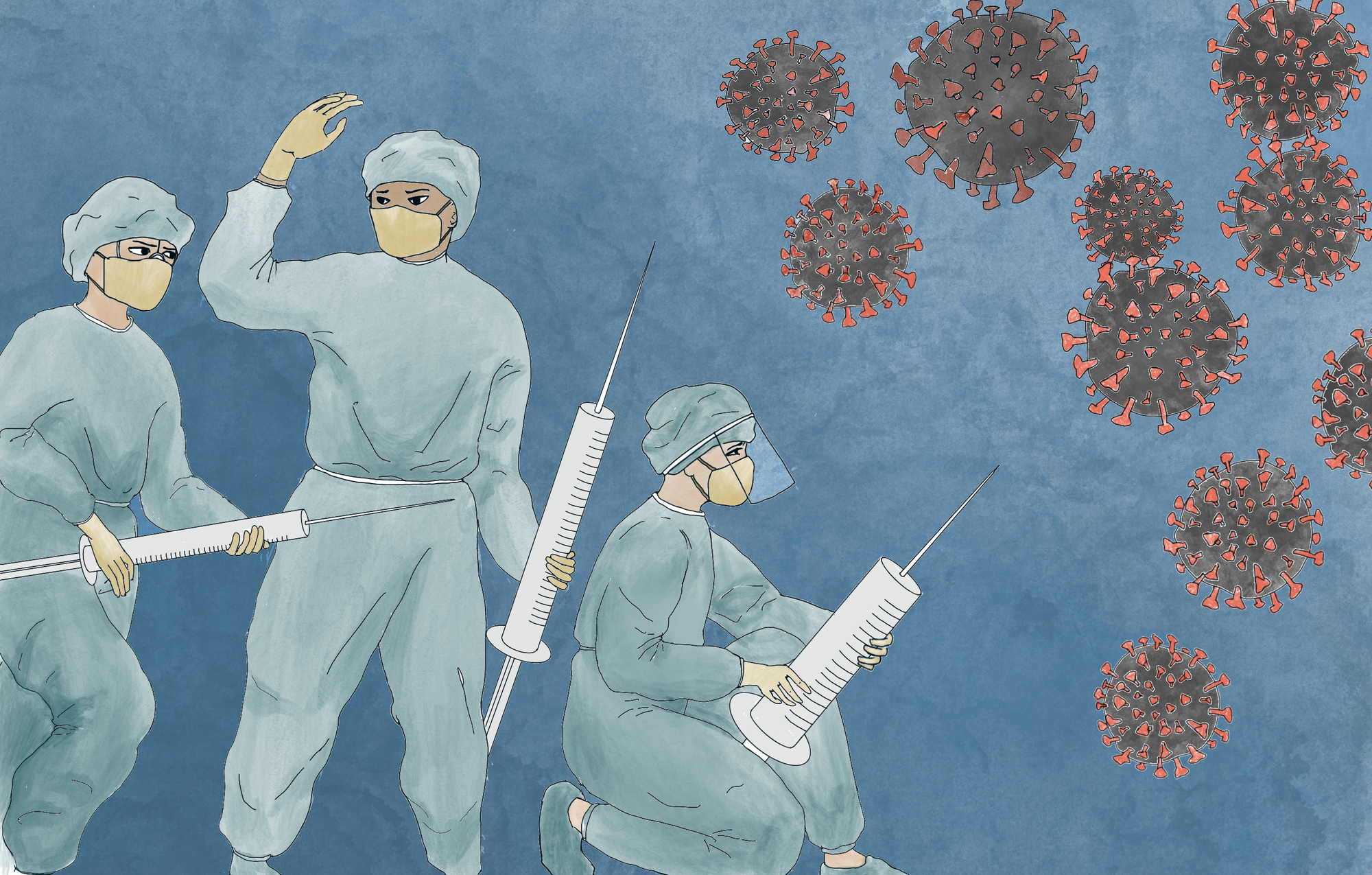COVID-19 vaccine distribution gives hope to the UCLA community

The COVID-19 vaccines bring hope to the UCLA community. (Alice Zhang/Daily Bruin)
By Taber Ball
Feb. 8, 2021 2:51 p.m.
The COVID-19 vaccines offer hope for an end to the pandemic, UCLA students and faculty said.
With vaccine distribution underway and numerous members of the community continuing to be vaccinated, students and faculty share their hopes for a better future.
The fact that scientists developed an effective vaccine for COVID-19 in under one year is exciting and impressive, said Deborah Lehman, a professor of pediatrics.
Vaccine trials by both Pfizer and Moderna have proven that their vaccines are approximately 95% effective.
The COVID-19 vaccines’ superior level of effectiveness is noteworthy, Lehman said. The effectiveness of flu vaccines, for example, hovers between 50% to 60%, Lehman added.
Anne Pebley, a community health sciences and sociology professor, said the speed of the vaccines’ development is due to “vaccine containers”, or lipid nanoparticles, which researchers began developing prior to the COVID-19 pandemic.
Lipid nanoparticles are tiny droplets of fat that transport and protect the information the cell needs to fight the virus.
“When a new virus comes along that is affecting human beings, researchers can take information about the new virus and pop it into the vaccine container – and then they have a new vaccine that works against that virus,” Pebley said.
The U.S. Food and Drug Administration put its federal distribution plan into effect on Dec. 11. However, the vaccine will likely be unavailable to the general public until later this year because of logistical demands and a stated government priority to vaccinate health care workers and medically vulnerable populations first.
California’s vaccine distribution will be guided by the California Department of Public Health’s allocation guidelines for the COVID-19 vaccine, which recommends that the vaccine first be administered to health care workers, employees at long-term care facilities and residents at long-term care facilities.
Tram Nguyen, a social welfare and public health graduate student and a member of UCLA Against COVID-19, works at a public-facing internship. She said that in order to protect herself, her clients and her coworkers, it is of utmost importance that she gets vaccinated.
If the public really understood the vaccine approval process, people would be more willing to get vaccinated and have fewer reservations, Nguyen said.
Pebley said the vaccines have been developed by serious, careful and highly talented scientists working in universities and pharmaceutical companies around the world. While they focused on quickly developing vaccines to save lives, they also rigorously followed extensive safety procedures, she added.
Pebley added that because the vaccines use mRNA, a type of genetic material, rather than material from the virus itself, these vaccines are actually safer than others.
Eliza Loftus, a first-year business economics student, said she plans to take the vaccine when it becomes available.
While Loftus did share that she was nervous about the vaccines’ possible side effects, she said it is important for everyone to get vaccinated in order to have a normal and safe college experience.
“I want things to go back to normal as quickly as possible,” Loftus said. “I feel that taking the vaccine will help that happen.”
Pfizer and Moderna released statements saying their vaccines had few adverse effects and that most side effects, such as fatigue, headache and pain, were either mild or moderate.
Pebley said even if rare and mild side effects occur, they are likely to be very minor in comparison to the risk of getting sick with COVID-19 and potentially dying or having long-term serious effects.
On the downside, news of the vaccine has made people feel more comfortable engaging in risky behavior, which is causing case numbers to rise, Nguyen said.
Until about 70% of the population is vaccinated, Pebley says she expects the pandemic to continue.
“Between now and the time substantial numbers of people get vaccinated, we are going to have a much worse pandemic,” said Pebley.
As the vaccination effort continues, individuals still need to adhere to COVID-19 safety measures, Lehman said. People should stay safe and follow guidelines, such as wearing masks and social distancing, even after getting vaccinated, Lehman added.
“It’s one of those situations in which everyone’s fate depends on other people doing the right thing,” Pebley said.

